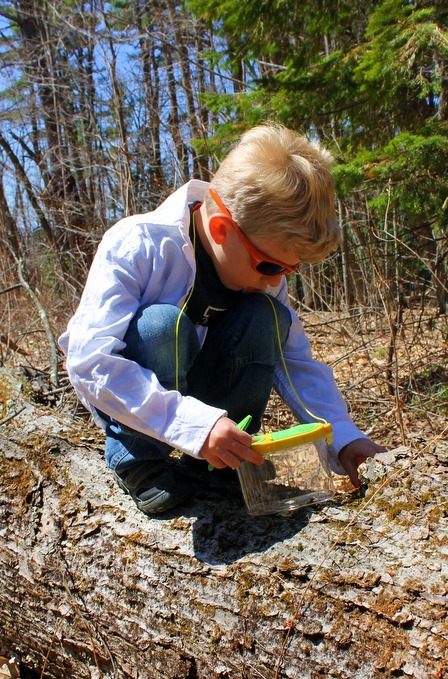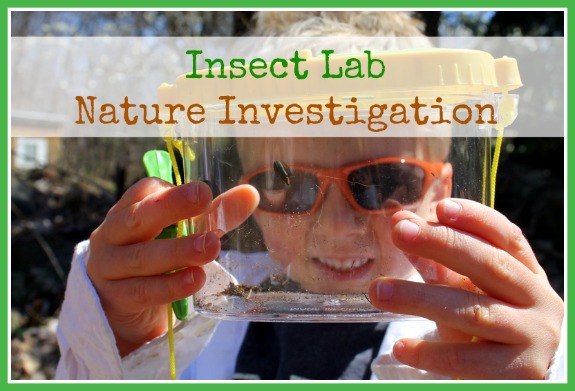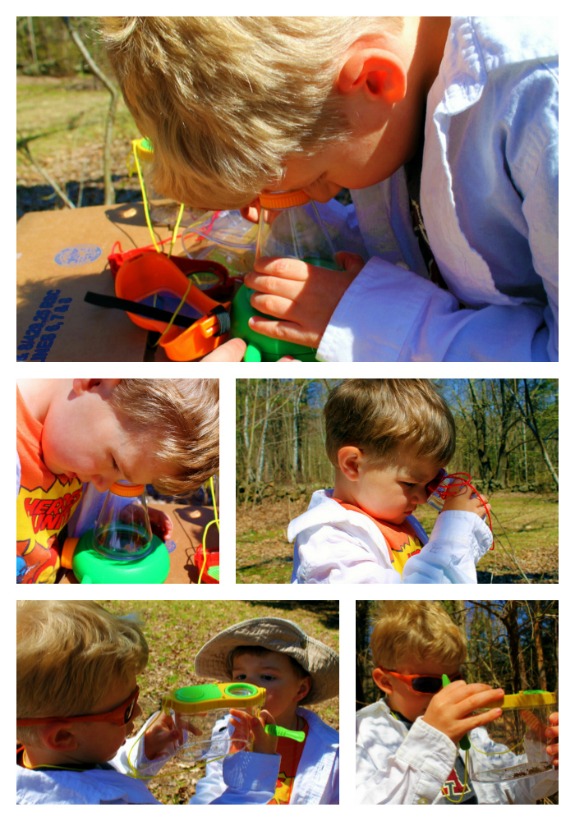Spring brings flowers, warm air, green grass . . . and insects. Many, many insects!
Due to mild weather and their natural instinct to hunt for food after winter hibernation, insects are abundant in the spring. Many spring insects are young; they have recently hatched out of an egg case or matured from pupae to adult. As spring turns to summer, insects are increasingly active due to their desire to mate.
If your little one is curious about insects, your local dollar store can provide several investigative tools such as magnifying glasses, bug habitats, and lab coats. Mother nature will provide the rest. Let’s play Insect Lab Nature Investigation!
(This post contains affiliate links. All opinions are my own.)
1. Gather nature investigation tools and supplies.
Some helpful items to have on hand are magnifying glasses, bug habitats, handheld nets, tweezers (for lifting leaves, not insects), and a children’s guidebook to insects. Arrange the nature investigation tools on a cardboard insect lab table. My kids love it when I make their play official with a sign!
2. Go on an insect hunt.
Search under rocks and rotted logs. Peek into the cracks of an old stonewall. Look along that spot where the meadow meets the forest. Show your child how to look for insect clues: a nibbled leaf, woodpecker damage on a tree, or small holes in the ground. Teach your child to always respect an insect’s home – if he moves a rock to see what is underneath it – he needs to move it back.

3. Identify the insects.
This is when an insect identification guide becomes a useful tool. Did you know that a common Pill Bug (or Potato Bug) is really a type of Wood Lice from the family of Armadillidiidae? I didn’t either, but now Colin and Owen do! Owen discovered a really neat centipede under a log. Through our identification guide, we learned that a centipede is not an insect because it has more than six legs.
4. Observe the insects.
Does the insect fly? Squirm? Crawl? Jump? Does it change color in the sunlight? Can your child find the insect’s head, abdomen, and thorax? Does the insect use camouflage to blend into its surroundings? What does your child find interesting, creepy, or cool about the insect?
5. Release the insects.
As much as your child may want to keep their new friend, I probably don’t have to convince you that insects do not make the best pets. It’s best to release the little buggers back into the wild!
Interacting with nature’s insects through play, discovery, and investigation can help reduce a child’s fear of insects, spark their interest in entomology and/or other sciences, and most importantly, gets them outside in the fresh air!












